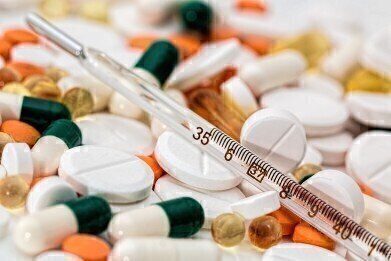Water/Wastewater
Where Does Drug Waste Go?
Apr 20 2018
Breakthroughs in the world of pharmaceuticals have allowed us to achieve marvellous things – whether it be easing the effects of a mild headache or curing terminal illnesses. But where do all those drugs go once we have consumed them?
Shockingly, between 70% and 80% of the antibiotics intended for human or animal use ultimately find their way into the natural environment. As well as being improperly disposed of (thrown into the garbage or flushed down the toilet), much of these drugs are still present in smaller forms in human waste after being processed by the digestive system – which accumulatively can have a significant impact on the natural world.
A disturbing new study
The exact concentrations of drug waste in our rivers and oceans is largely unknown, but a new study from the IHE Delft Institute for Water Education in Holland has sought to quantify them more clearly. Lead researcher Francesco Bregoli and his team used diclofenac as a barometer for drug pollution all over the globe, being as it is a common anti-inflammatory medication and representative of thousands of other pharmaceuticals used worldwide.
Begoli analysed concentrations of diclofenac at 1,400 known pollution hotspots around the world, with the majority of locations in Europe and North America. They then cross-referenced these concentrations with a specifically-designed computer model, which is able to predict future levels of pharmaceutical pollution by taking into account factors such as drug sales, population growths and sewage system capabilities.
The team found that over 10,000km of rivers have dangerously high levels of diclofenac, which is quantified as more than 100 nanograms per litre according to the EU. More concerningly, the actual state of play is feared to be even worse, since pollution levels are believed to be higher in Asia, Africa and Latin America where under 25% of wastewater is treated. Even in the plants which do exist, technology is inferior to that found in places like Portugal, meaning the wastewater isn’t sufficiently filtered to remove its most harmful components.
A change in habit imperative
These high concentrations of drugs in rivers will eventually find their way into our seas and oceans, potentially having a disastrous effect on marine life the world over. Already, concerning consequences have been observed on river-dwelling fish and mammals. In a 2015 study from Carnegie Mellon University in Pittsburgh, male fish were given an involuntary sex change from high levels of oestrogen in the water. This endangers their ability to procreate and ultimately jeopardises the longevity of the species.
While advanced technology can help to filter out unwanted pollutants from reaching our waterways, it’s not a silver bullet solution to the problem, according to Begoli. Regarding diclofenac, global consumption currently stands at 2,400 tonnes per year, several hundred of which remain present in human waste after travelling through the body. Of those several hundred tonnes, more than 90% make it through wastewater treatment facilities without being adequately filtered out.
As a result, it’s clear that we need to change our habits to reduce our consumption of such drugs in the first place. River pollution has increased substantially over the last couple of decades as rampant urbanisation has increased the proliferation of sewage systems without adequate treatment facilities. “In 2000, sewage was a source of pollution in about 50% of the rivers in the world,” explained Maryna Strokal, a leading expert on the topic. “By 2010, sewage was a source of pollution in almost all rivers worldwide.”
Events
Apr 22 2024 Hannover, Germany
Apr 23 2024 Kuala Lumpur, Malaysia
Apr 24 2024 Sao Paulo, Brasil
May 05 2024 Seville, Spain
May 13 2024 Munich, Germany













